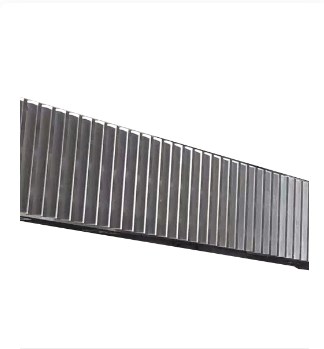-

+86-13404286222
-

hmjxboss@gmail.com

INQUIRE NOW

+86-13404286222

hmjxboss@gmail.com

INQUIRE NOW
Introduction to Jiangyin Huanming Machinery Co., Ltd.
2024-03-01The role of mechanical processing in the field of nuclear energy?
2024-03-18Introduction to the Application of Mechanical Processing in the Marine Industry?
2024-03-19How can mechanical processing improve the performance and reliability of wind turbines?
2024-03-26What are the applications of machining in the field of wind power metallurgy?
2024-03-27Rack Rail plays a vital role in modern industrial manufacturing and information infrastructure. Whether in server cabinets in data centers, automated production lines, communications equipment, control systems, or audio and video equipment, rack rails are essential components for stable operation and convenient maintenance. With the continuous advancement of industrial design and intelligentization, rack rail structures, materials, and installation methods are continuously optimized to meet the demands of high density, high reliability, and high efficiency.
I. Core Functions and Design Concepts of Rack Rail
Rack Rail's primary function is to provide stable support and sliding guidance for equipment within the rack, facilitating installation, maintenance, and removal. Traditional fixed racks no longer meet the space utilization and flexibility requirements of modern industry and data centers. Therefore, modularity, adjustability, and high load capacity are becoming key trends in rack rail design.
Structurally, rack rails typically utilize symmetrically mounted metal rails to ensure balanced and smooth movement of equipment when extended or extended. High-quality rail systems can reduce equipment damage caused by vibration while improving operational safety and precision. Especially in servers and high-precision instruments, rail stability is directly linked to overall system reliability, making manufacturing precision and surface treatment key design elements.
II. Rack Rail Materials and Manufacturing Processes
Modern rack rails are typically manufactured from high-strength steel or aluminum alloys through cold rolling or precision machining to ensure excellent bending strength and durability. Steel rails are widely used in heavy equipment racks due to their high load-bearing capacity, while aluminum rails, due to their lightweight nature, are more suitable for applications requiring greater flexibility and heat dissipation.

Surface treatments for rack rails include electrogalvanizing, powder coating, or anodizing to enhance corrosion and wear resistance, ensuring smooth sliding and an aesthetically pleasing appearance even after extended use. The introduction of laser cutting and CNC bending technologies in modern production has significantly improved rail dimensional accuracy and assembly compatibility, meeting the customized requirements of various equipment manufacturers.
III. The Importance of Rack Rail in Data Centers
In data center construction, rack rails are an indispensable component of the cabinet system. With increasing server density, effective management of cabinet space has become a key concern for operations and maintenance personnel. High-quality rails not only enable quick server installation and replacement, but also effectively support stable equipment operation under high-temperature and high-load conditions.
Data center environments require extremely high safety and reliability, so rack rails undergo rigorous testing for load-bearing design, seismic resistance, and heat dissipation compatibility. Modern cabinet rails generally feature tool-free installation and quick-release mechanisms. This user-friendly design significantly reduces maintenance time and O&M costs. With the promotion of green data centers, lightweight rails and the use of recyclable materials are becoming new trends.
IV. Applications of Rack Rail in Industrial Automation
In industrial automation equipment, rack rails have increasingly diverse applications. They not only serve as the foundation for modular equipment installation but also provide precise positioning and vibration protection. With the advancement of industrial intelligence, control cabinets, robotic systems, and test equipment are placing increasingly high demands on rail precision.
Rack Rail's sliding properties enable smooth equipment movement during maintenance, while its robust structure ensures stability in high-frequency environments. To adapt to complex industrial environments, some rails also feature dust and moisture resistance, as well as electromagnetic interference resistance. These technical details have become crucial indicators in evaluating rail performance. As the manufacturing industry shifts toward flexible production, Rack Rail's modular design provides reliable structural support for rapid equipment deployment and functional expansion.

V. The Impact of Rack Rail on Overall System Performance
Rack Rail's quality and performance directly determine the stability and lifespan of the entire rack system. High-precision rails not only reduce equipment vibration but also maintain the system's thermal balance, preventing hardware performance degradation due to temperature fluctuations. In high-density cabinets, a well-designed rail structure also promotes air circulation, optimizes heat dissipation, and ensures long-term, efficient equipment operation.
For manufacturers, rack rail design and testing are equally critical. Structural simulation analysis and fatigue testing ensure rail reliability under various extreme operating conditions. In particular, in environments with high vibration, high humidity, or high temperatures, the material's resistance to deformation and wear determines its long-term stability.
The development of Rack Rail not only reflects the level of precision in industrial manufacturing but also reflects the convergence of information technology and automation. As a key component connecting equipment and racks, it plays an irreplaceable role in ensuring system operational safety, improving maintenance efficiency, and optimizing spatial layout.
In the future, as digital transformation accelerates, Rack Rail design will place even greater emphasis on intelligence, modularity, and environmental performance. Whether in high-end server cabinets or intelligent manufacturing equipment, Rack Rail will continue to support the infrastructure of industrial and information technology with its stability, precision, and efficiency, becoming an indispensable core component in the modern industrial system.
 No. 16 Dayuanli Road, Yunting Street, Jiangyin City, Jiangsu Province, China
No. 16 Dayuanli Road, Yunting Street, Jiangyin City, Jiangsu Province, China
 +86-13404286222 / +86-13404286222
+86-13404286222 / +86-13404286222
 +86-510-86668678
+86-510-86668678
 hmjxboss@gmail.com
hmjxboss@gmail.com
Copyright © Jiangyin Huanming Machinery Co., Ltd. All Rights Reserved.Custom Large Components Mechanical Processing Manufacturers
